Constellating bodies in temporary correspondence Museum of Contemporary Art, Sydney
(2021-2023)
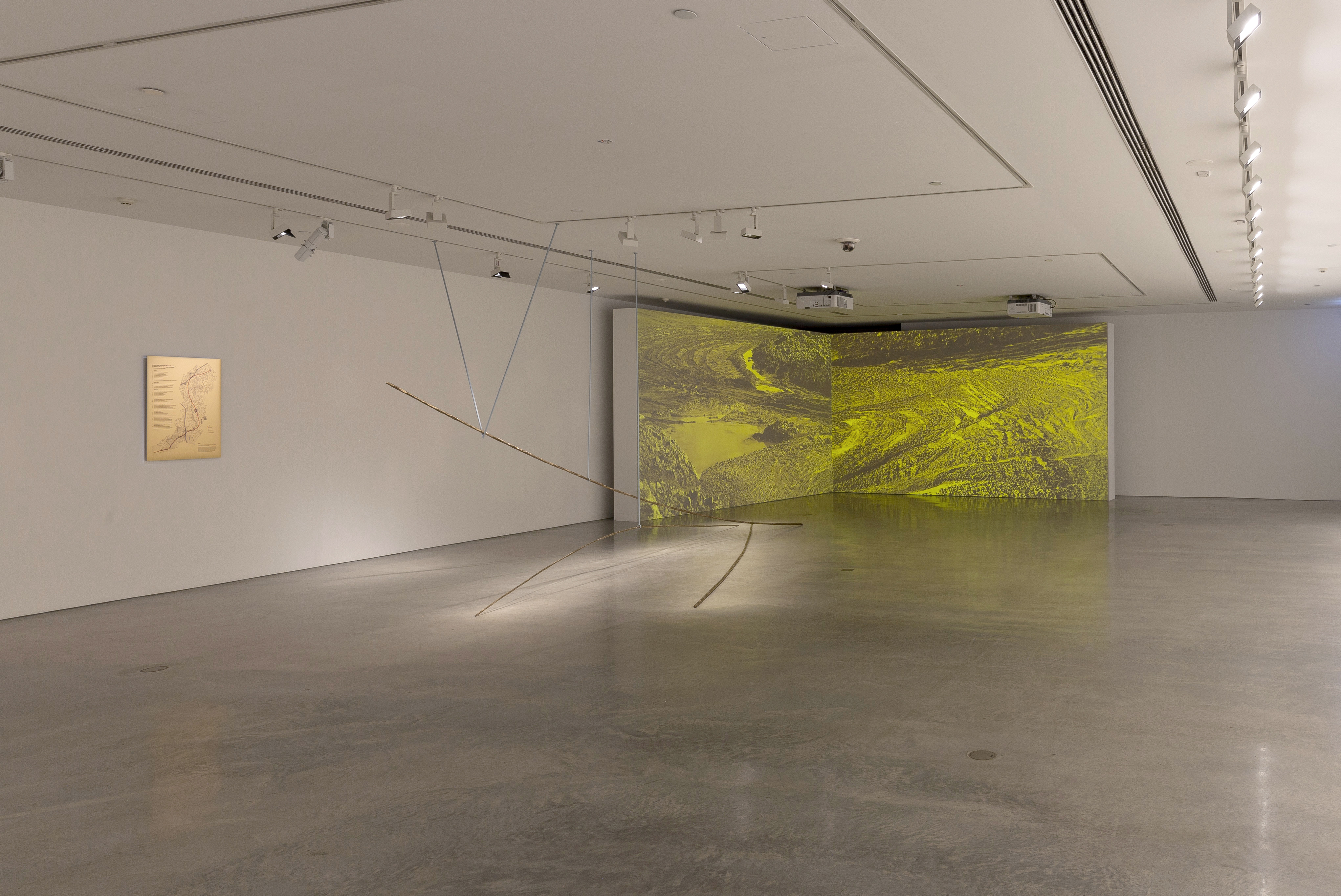
EXHIBITION DATES
26 February 2021 – 30 April, 2023
VENUE
Museum of Contemporary Art, Sydney
MCA Collection: Perspectives on Place
CURATOR
Anneke Jaspers
ASSOCIATED MATERIALS
Map of walk
Bianca Hester on the work
Bianca Hester & Anneke Jaspers: Artist Voice conversation
Groundwork - project publication by Perimeter Editions #69, 2021

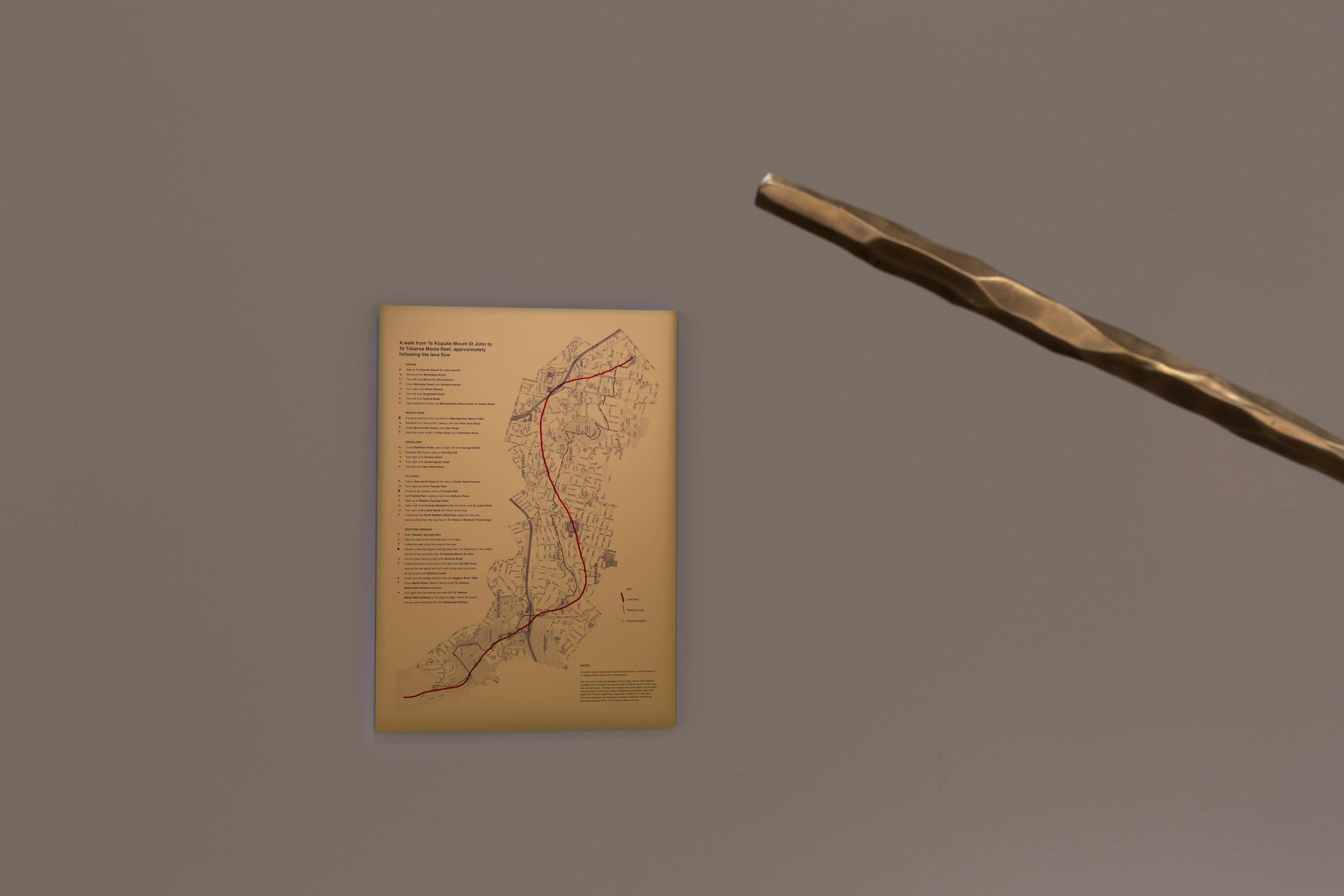
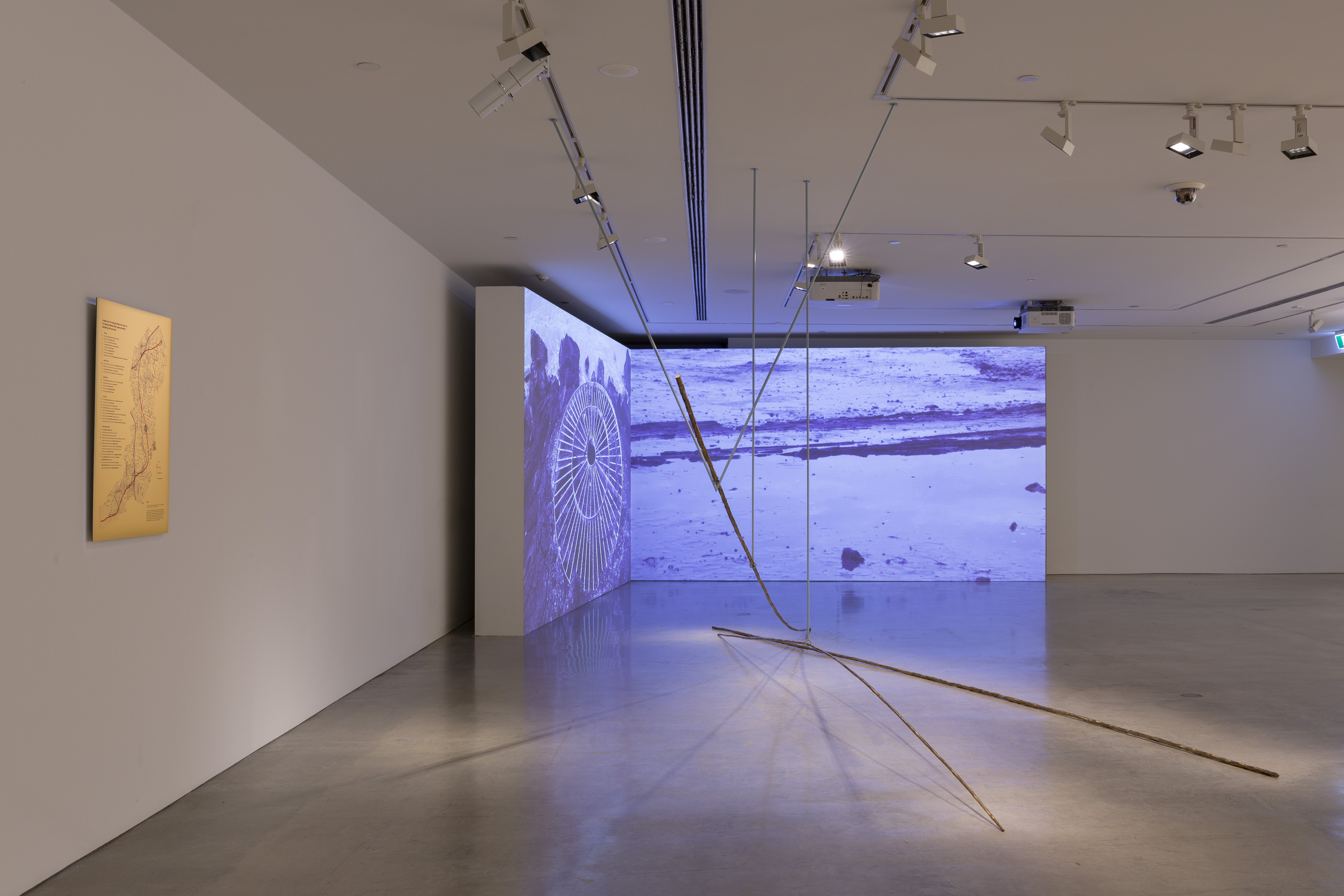

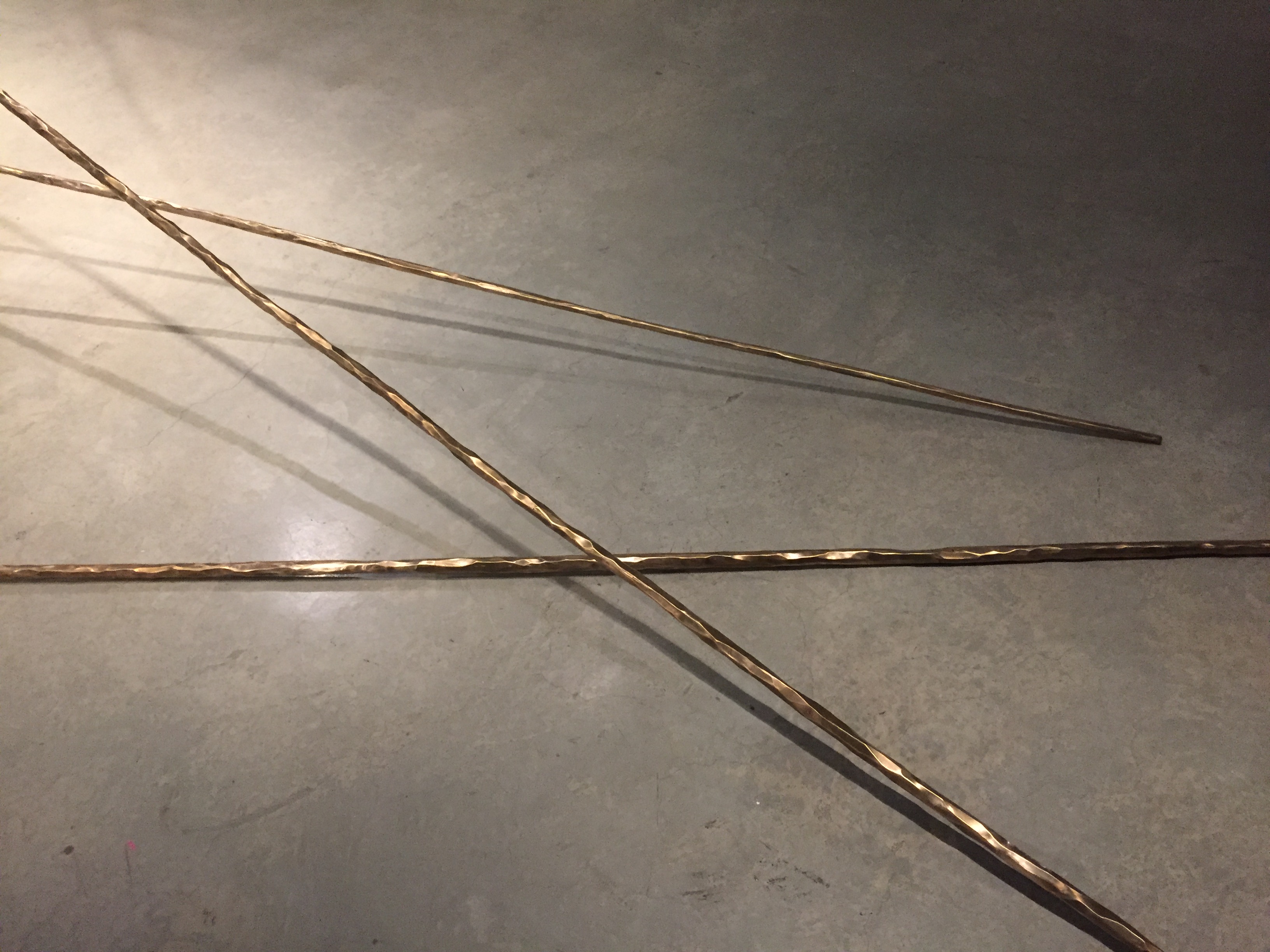
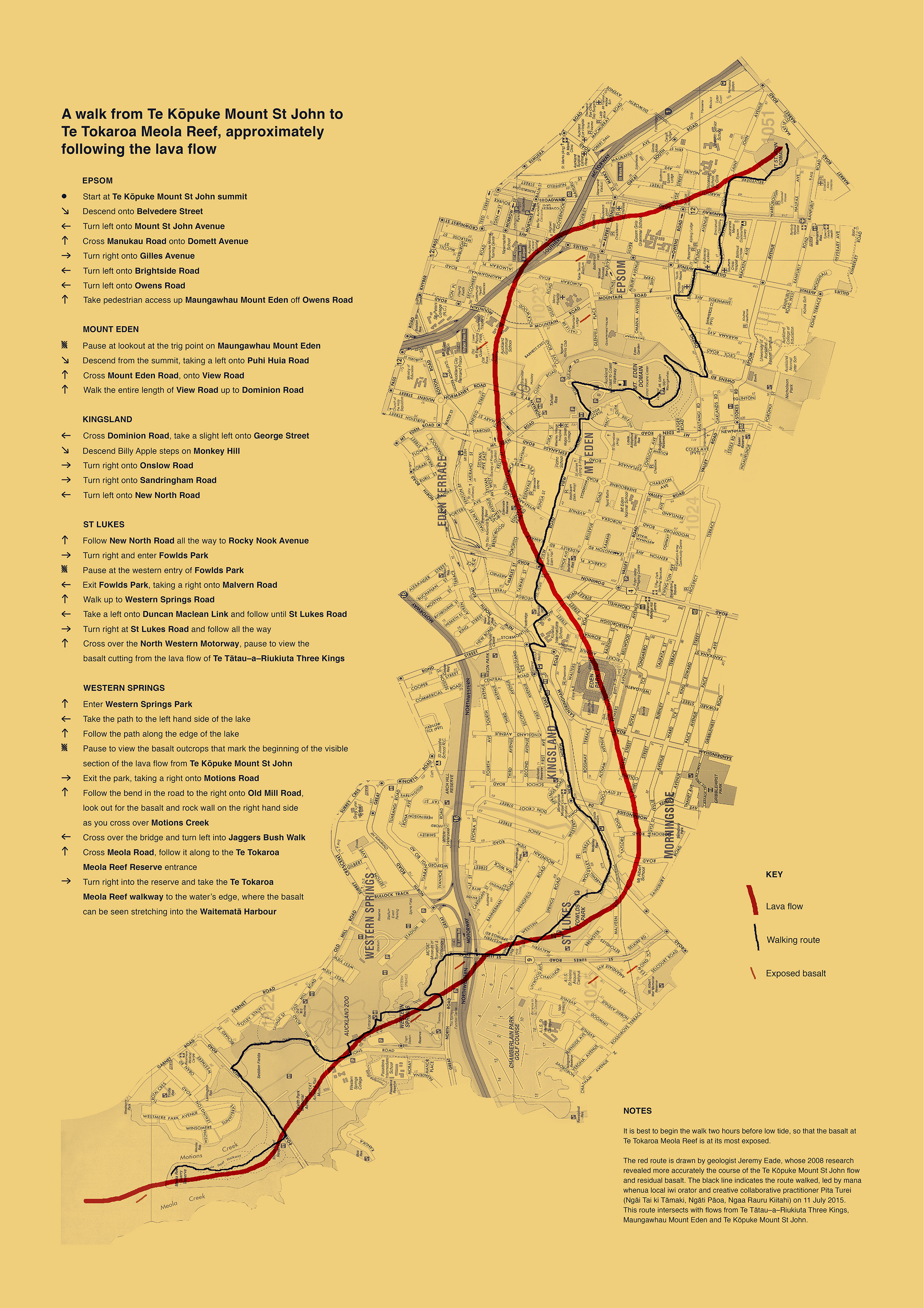
Constellating Bodies in Temporary Correspondence belongs to a larger body of work produced for an exhibition at ST PAUL St Galleries, Auckland, in 2015, titled Movements materialising momentarily. This expansive project was developed during multiple research residencies and engaged with a series of three paired sites across the city where human activity, geology and ecology have converged in fraught and revealing ways. By tracing connections between these sites through the movement of materials, Hester devised an alternative way of mapping the city. As is typical of her method, this involved extensive consultation with locals, including Māori custodian Pita Turei (Ngāi Tai ki Tāmaki, Ngāti Pāoa, Ngaa Rauru Kiitahi) and artist Natalie Robertson (Ngāti Porou, Clan Donnachaidh); geologist Jeremy Eade; vulcanologists Elaine Smidt and Maneesha Sakamuri; as well as local artists, students and educators.
The first axis in this project linked the urban landscape around the Waterview Tunnel and the motorway’s tailings dump at Wiri (formerly Matukutūruru Wiri Mountain). The second axis connected two fossilised forests on the shorelines of the Waitematā and Manukau Harbours. Constellating Bodies in Temporary Correspondence relates primarily to the third axis, which followed the course of a 75,000-year-old lava flow between the now-extinct volcano Te Kōpuke Mount St John and the Te Tokaroa Meola Reef, revealing the incredible palimpsest of ancient and contemporary forces that have shaped the urban terrain.
For this element of the project, Hester developed a collective walk with 41 participants [^1]. The shape and trajectory of this walk emerged through extended discussions, workshops and consultation with Turei, Robertson and Eade, as well as artists Monique Redmond and the late Paul Cullen, and curators Abby Cunnane and Charlotte Huddleston. Collectively, their knowledge of the cultural, social and geologic significance of the landscapes through which the walk traversed helped determined its final form on the day. The walk was performed under the guidance of Turei who hosted, directed and narrated various cultural and political stories along the way.
Aspects of the walk are documented in the two-channel video and map. The group of participants loosely followed the path of the ancient lava flow through city streets, before arriving at Te Tokaroa Meola reef at the edge of the Waitematā Harbour, where the reef is visible at low tide. In addition to taking in exposed sections of remnant basalt along the way, they were encouraged to consider the ground they traversed: the deep time of its geological formation; Māori custodianship of the whenua (land); and the more recent capitalist processes through which it has been altered, such as colonisation, mining, and urban development.
As they walked, the group worked together to carry three 5.6m bronze sculptures, which Hester made by casting wax forms she had fashioned by hand. This shared endeavour – necessitated by the unwieldy scale of the long, flexible rods – conjured collective modes of protest and solidarity. Over the course of the 14km route, the bronze poles also animated the idea of drawing an ephemeral line across the landscape: a reference to the original trajectory of the lava – now mostly obscured – but also to Western modes of mapping and by extension, occupation.
Participants included: Fiona Amundsen, Sosefina Andy, Alison Annals, Xin Cheng, the late Paul Cullen, Layla Tweedie-Cullen, Abby Cunnane, Eve Cunnane, Jeremy Eade, Shane Fairhall, Friends of Fowlds Park, Mark Henley, Bianca Hester, Rebecca Anne Hobbs, Tracy Marie Howe, Charlotte Huddleston, Suzie Hunt, Dieneke Jansen, Joe Jowitt, Matt Kambic, Mischa Chaleyer-Kynaston, Jeremy Leatinu‘u, Ziggy Lever, Lucy Meyle, Li-Ming Hu, Jennie Palmer, Reba Pinto, Monique Redmond, David Rhode, Carmel Rowden, Deborah Rundle (and canine friend Hari), Maneesha Sakamuri, Mark Schroder, Sarah Smuts-Kennedy, Harriet Stockman, Akira Tamura, Aydriannah Tuiali‘i, Pita Turei, Layne Waerea, Sarah Wall and Lynette Wilson.